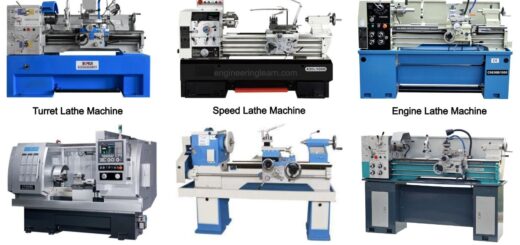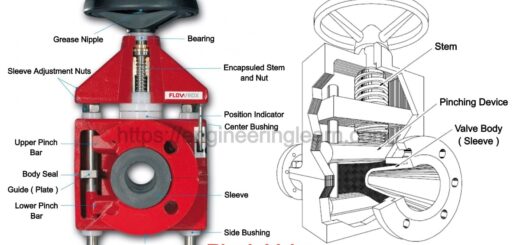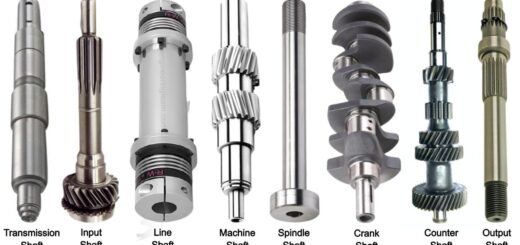Artificial Lift – Introduction, Purpose, Working, Methods & Advantages [Complete Details]
![Artificial Lift - Introduction, Purpose, Working, Methods & Advantages [Complete Details]](https://engineeringlearn.com/wp-content/uploads/2022/12/Artificial-Lift-1024x539.jpg)
Introduction
Artificial Lift – Introduction, Purpose, Working, Methods & Advantages: – A greater part of the oil and gas wells all over the world require artificial lift technology and innovation to keep up with maximizing production. The unrivaled arrangement of productive, dependable, coordinated artificial lift solutions can overcome each specialized test and assist you with accomplishing your business goals.
What is Artificial Lift?
Artificial lift is a process to expand the fluid flow in an artificial way. The artificial lift strategy is utilized to pull out raw petroleum from production wells by expanding pressure within the reservoir. For expanding production, mechanical devices or gadgets or different means are utilized when the reservoir’s drive energy is lacking to push the oil to the surface. Artificial lift methods or strategies force the oil to reach the surface and thus increase production and recovery.
Working of an Artificial Lift
The working standard of an artificial lift framework is to keep up with the expected base opening pressure by artificial means to deliver desired fluids. This is accomplished by different kinds of artificial lift strategies in the oil and gas industry like sucker rods, electrical sub-radiating pumps, rotating rod pumps, water-powered pumps, piston-type sucker rods, plunger lifts, gas lifts, and so on. Each enjoys its remarkable benefits and detriments.
Purpose of Artificial Lift
Artificial lift is utilized in oil wells to serve the accompanying needs:
- Increasing production
- Increase reservoir pressure
- Extending the production life of the well.
Artificial Lift Advantages for Customers Include
- Boost life-of-well productivity and production
- Reduce risk and maintenance needs
- Enhance lift while adapting to changing rates
- Simplify selection, installation, and processes with expert support
Artificial Lift Methods
Every Method has applications for which it is the ideal installation Legitimate selection of an artificial lift method for a given production framework (supply and fluid properties, well-bore setup, and surface facility restrictions) requires an intensive comprehension of the system. Financial aspects examination is generally performed. There are a few artificial lift methods or techniques in the oilfield industry. Notwithstanding, the most widely used common method and strategies for artificial lifts are mentioned below: –
1. Progressive Cavity Pumps (PCP)
Progressive Cavity Pumps (PCP) are generally utilized as highly viscous fluids and are frequently applied in the oil business. They are positive displacement pumps and comprise a rotor and a stator. Utilizing a top side or a base hole motor, the rotor is turned which makes consecutive depressions to push the oil to the surface.
Advantages of PCP
- Progressive cavity pumps as artificial life solutions give a large number of adaptability regarding variable rate and profundity.
- The straightforward plan of PCP’s has a low operating and capital expense when contrasted with other artificial lift frameworks.
- Their efficient and productive performance of the artificial lift technique is profoundly effective as they offer extraordinary protection from abrasives and solids.
- They also have superior sand lifting capacity.
Disadvantages of PCP
- They are restricted to setting depths and temperatures.
2. Rod Lift
Rod lift is one of the most widely recognized types of artificial lift strategies. Rod lift utilizes a pump jack at the surface to function as an artificial lift solution. Pump jacks are likewise famously known as sucker rod pump (SRP), dinosaur, horse head, gesturing jackass, and so forth. They are controlled by electricity or gas and are also known as beam pumps.
Advantages of Rod Lift
- High system efficiency
- Optimization controls available
- Economical to repair and service
- Positive displacement/ strong draw down
- Upgraded materials reduce corrosion concerns
- Flexibility. Adjust production through stroke length and speed.
Disadvantages of Rod lift
- Potential for tubing and rod wear
- Gas-oil ratios
- Most frameworks are restricted to the capacity of poles to deal with loads. Volume diminishes as profundity increments.
- Environmental and aesthetic concerns
3. Gas Lift
Gas lift is an artificial lift solution where the load on the reservoir is diminished by injecting gas and pushing the product to the surface. Gas infusion expands the gas-liquid proportion which diminishes the gas, oil, and water combination density. Gas lift installation has the ability to oversee rough materials like sand. This type of artificial lift framework is utilized in low-efficiency, high-gas/oil ratio wells, or deviated well bores.
A compressed gas (normally Carbon dioxide or nitrogen) is sent into the well which pressurizes the well and powers the liquid to reach the equipment and surface piping. Gas lift valves are introduced at determined profundities for infusing the high-pressure gas into the tubing.
Advantages of Gas Lift
- Crooked openings can be lifted effectively with a gas lift.
- Central gas lifting framework can be utilized to service many wells.
- Installation of gas lift is viable with subsurface safety valves and other surface equipment.
- Deviated or slanted openings can be lifted effectively with a gas lift.
- Gas lift is flexible, the gas lift can be utilized in an extensive variety of volumes and depths.
Disadvantages of Gas Lift
- Gas lift is relatively inefficient
- Moderately high back pressure may genuinely confine production in the continuous gas lift
- Good data are required to make a decent design.
4. Hydraulic Lift
Hydraulic lift is an artificial lift technique that utilizes a surface pump to compress the well liquid. The fundamental parts of this kind of hydraulic lift framework are surface high-pressure infusion pump and pipeline, injection tubing, down hole gathering, and positive displace or jet pump. The hydraulic lift well has its wellhead associated with the power fluid manifold. The power fluid, which is commonly refined oil, blends in with the produced fluid; the subsequent liquid segment applies a lighter hydrostatic tension than does the formation fluid alone, decreases the resistance to flow, and diminishes the work required of the downhole pump.
Advantages of Hydraulic Lift
- Hydraulic lifts are basic, safe, and economical since they utilize fewer moving parts contrasted with mechanical and electrical frameworks.
- Hydraulic lifts are more easy to maintain.
- Hydraulic lifts are safe to use in synthetic plants and mines since they don’t cause sparks.
It’s simple switches and push buttons make it simple to begin, stop, speed up and decelerate.
Disadvantages of Hydraulic Lift
- A hydraulic lift can’t move faster than 150 feet per minute.
- Oil in the piston framework can overheat decently fast, so effective temperature control is significant.
5. Plunger Lift
Plunger lifts make a differential pressure that drives the liquid up the packaging to production equipment and funneling. Utilizing a time control associated with a high-pressure control valve, this sort of artificial lift monitors the valve opening and fluid lifting. While the tubing is closed in, the progression of the well stops. The artificial lift plunger then falls to the lower part of the well, and liquid accumulates on top of it.
Plungers might be of different types like a strong plunger, brush plunger, Pad plunger, and constant flow plunger. Their working philosophy is almost similar.
Advantages of Plunger Lift
- One of the benefit of plunger lifts is that they have a low initial cost
- Very little maintenance is required in plunger lift
- there is no external source of energy
required in most cases.
Disadvantages of Plunger Lift
- One of the limitations is its mechanical conditions
6. Electric Submersible Pump (ESP)
An Electric submersible pump (ESP) is additionally used to push production fluid out of the well. They can be utilized for various applications like high temperature, flighty, ordinary, seaward necessities, and so on to maximize production. An ESP is installed underneath the reservoir fluids at the lower part of the tubing string and interfaces with a long electric engine. The electrically powered and controlled pump with its cutting edges, move the liquids in the well. ESPs can move large volumes of liquid. A control box is installed that senses the pump’s need to increment or diminish the fluid volume prerequisite.
Advantages of ESP
- These pumps are more secure than various types of pumps as all likely harmful components of the pumps are stored submerged.
- Submersible pumps produce small quantities of noise it is submerged underwater.
- When contrasted with ordinary pump, submersibles pumps are additionally climate-friendly because it pumps liquid that is nearer to the pump and it has less capabilities than regular pumps.
Disadvantages of ESP
- These pumps have a short life since it impacts along with your ponds and sits.
- It can likewise be difficult to clean and keep as it’s sitting on the backside of the pond.
- Quite possibly the pump may be starred and lose its seal, in this way causing the liquid to enter the engine housing and trigger significant damage to the unit.
Selection of Artificial Lift Framework
The determination of an artificial lift technique relies upon different parameters like:
- Economy
- Equipment and service accessibility in that geographic area
- Desired production rate
- Depth of the oil well
- Production flexibility
- Surface constraints
- Liquid attributes
- Reservoir pressure
- Well profile
- Reliability
Conclusion
Artificial lift outfits you with the innovation and technology, tools, and ability to maximize production and cutoff costs. Whether you’re working in traditional, capricious, deep water, weighty oil, or mature wells, Weatherboard delivers an industry-leading lift portfolio and unparalleled ability to give you a distinct advantage.
Image Source: – arcweb













